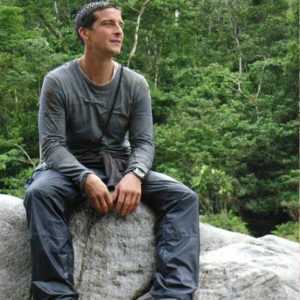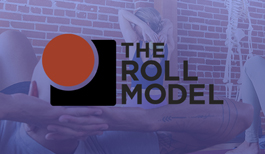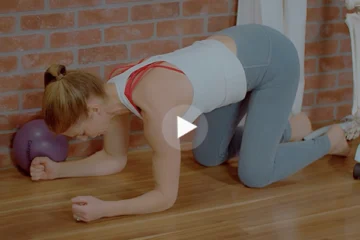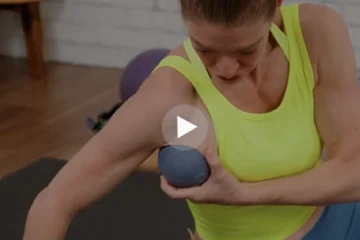
It is not hard to find examples of rounded shoulder posture in the world around you, or examples of rounded shoulders before and after. A large percentage of the population slouches as they walk, sit, or stand. This stance may even be fashionable if the postures of many actors, actresses, and presenters on the red carpet at this year’s Oscars is any indication!

Check your own tendency for rounded shoulders by standing comfortably and letting your hands rest at your side. Observe where your palms are facing. If your palms are facing toward the back, your chest muscles may be tight, causing your shoulders to hunch forward. Your shoulders are probably resting where they belong if your thumbs face forward and your palms face toward your thighs.
Rounded shoulders can become habitual as you repeatedly over time sit in front of a computer, drive a vehicle, or watch TV slouched in a couch. The habit can start early, as you slump forward to protect yourself from the world around you, including physical, emotional, or sexual abuse, or in the case of many women, to try to make your breasts less noticeable. If you are a runner or a cyclist, you are likely to round your shoulders in your sport. If you lift weights to develop your “pecs”, you may create pectoral (chest) muscles that are so strong that they bring your shoulders forward.
Anatomy of Rounded Shoulder Posture
When you slouch with shoulders forward, the muscles in the upper back and neck strain, overstretch and overwork. When the shoulders slump, the chest muscles shorten, the small muscles between the shoulder blades weaken, and the back muscles stretch and lengthen, which, in turn, increases the tendency to slump. Over time, the functioning of your spine and your arms are affected, breathing becomes more difficult, and your internal organs are affected. This postural repetitive stress injury can contribute to osteopenia, osteoporosis and osteoarthritis in the joints and bones.
Although numerous muscles are involved and affected, the pectoralis minor muscles are the star players in rounded shoulder posture. As you keep rounding your shoulders, your pectoralis minor muscles become short and tight. As a result, two back muscles, the mid-trapezius and the rhomboids overstretch and grow weak. Smaller muscles that were not designed to be postural muscles have to work hard doing a job they weren’t meant to do and chronic tension develops in the neck, shoulders and upper back.
Reversing Rounded Shoulder Posture
If you want to prevent or correct rounded shoulder posture, you can start by practicing yoga for posture or fitness movements that awaken the affected muscles described above so those muscles can support your new awareness and your new posture. In my blog posts next week I’ll be featuring some poses that will tune up your shoulders and exercises to improve posture! You can also add the therapy ball sequence included in the Yoga Tune Up® QuickFix Shoulder DVD. Start reversing unhealthy shoulder habits now and your body will thank you for it down the road!
Discover our shoulder exercises and shoulder pain solutions.
Watch our free 5 minute shoulder pain relief video.
Read our post about “How to get Olympic Inspired Shoulders.”












I have definitely found that releasing the pectoralis minor with the Yoga Tune Up® balls has helped to relief pain and improve my shoulder mobility getting me out of that slumped position. The quick check is something I’d never heard of before, thanks for sharing!
Dear Via,
this is also what I see as a Personal Trainer in every single client so far. And it is so important to open peoples eyes – and shoulders – to help them to get in a good and neutral posture. Thanks for your article!
Thanks Via! I’m definitely going to start working on my pec minors. Our hearts can’t shine through if they’re covered up by our shoulders!
i’ve been so aware of my posture since the beginning of the Level 1 training. Now the moment i start to slouch i instantly feel the taxing of the breath and immediately sit taller. hard to do when sitting for a while (like on a subway), so i try to scoot forward instead of leaning back. great reminder, thanks!
This is my posture! Time to begin rolling out my pectoralis minor muscles with more regularity! I also have a near constant ache in between my shoulder blades. My Rhomboids and Trapezius protesting? I think so…
This is a great post! I like the quick check to assess the shoulders. It is something easy that can be done throughout the day to check as I work on my posture : ).
I have been a chronic slumper my entire life, internally rotated shoulders,head forward, scapula trying to escape out make back. It has been such a hard fight but so worth the battle. I am in constant reminder of myself to work my posture, trying not to over work my traps, shorten my pecs, and mutate my body. As with all things practice makes perfect, and the YTU balls are leading the charge!
Our daily life from driving to texting to cooking to typing the blog response calls on use to round our shoulders forward. The problem is essentially an epidemic. our poor levator scapulars! I find the test/retest before and after the YTU Therapy Balls – you really feel the difference after rolling out levator scapula, trapezius and pectoralis major.
Posture is an ongoing challenge! Great simple explanation of rounded shoulders and really practical fixes. Thanks!
Jill’s video with Kelly Starett called neck gnar gnar shows a great way to release the tightness and shortening of the Levator Scapular and Scalenes. I was reading this post and the comments and went on a search for this video, to remind me of the myofascial release it facilitates.
In the past few months with the help of my tune up balls. I’ve been able to to un knot many of the tightness I harbor in my shoulders, and I must say it’s as if a weight has literally been lifted off them. I find that I am able to open up my whole upper body and people definitely respond more positively when you can look at them directly. It’s interesting how such a subtle change one’s appearance can alter things.
One of my earliest teachers talked about taking off the armor-that we often carry on our front bodies- within the safety of yoga class. Ifound that by lifting my heart and breathing into my clavicals with my shoulders back and down I shifted into a different plane of intake. I can’t wait to use my yoga balls to take this to the next level!
I checked up my posture when reading this… BUSTED!!!! I am totally guilty of rounding my shoulders. Like Emma has mentioned above I am also a “tall” woman and 5 9′, I have rounded my shoulders for years in efforts to be smaller. Thanks for the pectoralis minor mention! I am going to give mine some love. No need to hunch over when we were meant to shine! Time to get out my Tune up balls and get to rolling.
Great info. I love the choice of picture and your reference to slouching being “fashionable” I often demo poor posture and say that it only works in high fashion runway girls, but even then it isn’t really working for them! Thanks for drawing our attention to the pec minor, isn’t it awesome that we can use our YTU therapy balls to give our pec minor love! For years I thought I had to only let my body worker dig around in my arm pit, which is amazing by the way.
This post is talking to me! I have always had a tendency to round my shoulders forward, partly just due to my bone structure but also just because of daily life activities. I am constantly trying to bring awareness to my shoulders/posture and work to externally rotate, depress and slightly retract the scapula. I want to combat that shortening/tightening of the pec minor before it’s too late. I like using the yoga tune up balls around the pecs by leaning into a wall or using a ball on a block. It’s a great way to work it out. Thanks for a great post.
In terms of posture, how does crossing your arms affect the shoulder and back muscles? I can imagine that while it may be a comfortable alternative to slouching, crossed arms may not be beneficial either.
Thank you for your post! As a tall female (5’10”) I have spent most of my young adult life rounding my shoulders (and back) forward to appear shorter. Fortunately, through my yoga practice, my posture has started to shift. With that said, I’m excited to start using the YTU balls as another way to target and open those key muscles in the shoulders and upper back and continue on my journey towards developing a healthier posture.
Great post and I totally agree on how many people suffer from rounded shoulders. Both of my grandmothers had “hunchbacks” and when I looked at myself in a mirror more than ten years ago, I knew I was doomed as well unless I did something about it. That’s when I started practicing yoga and now after my YTU training, I know how the shoulders work and how to help externally rotate the shoulders of my students.
It’s astounding how many people have rounded shoulders. And it’s even more jaw dropping the number of athletes that have this problem because their coaches don’t give them proper instruction on how to do certain exercises without compromising their shoulders. I just recently spoke to a martial arts woman at a coffee shop. We briefly discussed martial arts and she went on to say there are so many shoulder injuries in MA. She showed me some of the movements she did in class and it was the lack of technique that was taught that made people’s injuries occur. It’s frustrating seeing so many people get injured because of incorrect posture, stance, movement. It’s even more frustrating for the athlete. I hope to help several people have healthy shoulders and maintain it!
I really liked this post because most often than not I catch myself rounding my shoulders! Thanks for sharing, it encouraging to know that some of the damage can be reversed!
Thanks for sharing.
Great post! I think we are all guilty of the chronic shoulder slump from time to time and I see this all the time around the office and just walking around. Personally, Yoga has really helped me correct this and be more aware of my posture standing up and sitting down.
thanks via, this article was really helpful. i have noticed some huge knots in my pec minor with the tune up balls (and the resulting scapula positon). so now i know that to counteract the downward pull of the pec minor i have to strengthen the rhomboids and mid-traps, huge!
My husband is at the computer all day long and I have noticed that he has limited mobility around the shoulders. Based on this article I believe he needs to work toward counter acting slouching. Fortunately I have the recommended DVD which I will have him watch the next time he slouches in front of the TV 🙂
My mom was right, She was always telling me to sit up straight but Im the kind of person that needs to know WHY. As she gets older she is slumping way over and I have to tell her to sit up straight. Now I can explain why and give her some balls to help her smooth out the tight muscles…IF she will listen : )
If I have learned one important lesson this week in the teacher training this week it has been that it is never to late to reverse or lessen the muscular damage that took years to create and that the biggest beneficiaries will be your health and well being. So I strongly suggest everyone pick up their Yoga Tune Up therapy balls and begin the movement!
Its so funny that I read this one today. I have been really concerned about this lately and working on being more aware, using my therapy balls and making an effort to be conscious of how I am sitting and standing. Any tips on how to work on the possition of the head. Mine is forward a little.
Im the opposite of rounded shoulders, Im so tense that my shoulders are always straight up towards my neck. I notice though when I practice daily, I’m more relax and my shoulders seem to be out of my ears. Yoga really helps with rounded shoulders and tense shoulders and also I have learned over the past months you just have to be really aware of your body.
May I never slump my shoulders again!
While rounding our shoulders sometimes feels like a comfortable position, it is actually creating a path for discomfort in our body in the long run. Thank your for the reminder to always be aware of our posture!
An improved posture was one of the first thing my friends and family noticed after I started practicing yoga regularly. Simply being more conscious of sloping shoulders was the first step to help improve my posture.
Great article. Thank you for sharing. Any suggestions for exercises/stretches that can be done while at the desk?
I always felt like I was told “shoulders back” and then would move them back to far. Or to “roll the shoulders back” and neither of these were postures I could maintain for any length of time. Finally I was told to press my shoulders down. I actively think of this when I am standing, walking or sitting and this greatly improves my posture.
This is a great post. It’s alarming to see so many really young (teenage) girls with rounded shoulders. An upright spine is not only good for our posture, but how we present ourselves to the world.
It’s important to note that people who don’t round their shoulders might be creating flexion of the lower back like I recently noticed in my own body! I thought I was doing well posturally until I realized I could see the wall behind me as I looked up. As I correct my spine, I will need to make sure I don’t start rounding shoulders to compensate.
shoulder flossing is my favorite for this, with an extra long pause right at about a 25 degree angle behind the head for ironing out that pesky pec minor.
Thanks everyone for your comments and tips. I love that Yoga Tune Up® supports good posture and gives YTU® teachers the tools and the context to support our students to work on posture and reverse slouching which is so prevalent in our culture and lifestyle. We can make a difference! Yay!
This is one of the most talked about postural issue in massage school. Almost everybody does this (except yogis). Awareness is a huge part of correcting this and yoga, especially YTU is great at building awareness, and providing the tools to change bad body habits.
To really get me to start paying attention to my posture I sat red walking with my arms by my sides but externally rotated, palms facing for wars, to undo shoulder pronation. What I found was that as I walked with better posture, my lats, abs and other muscles engaged so I burned a lot more calories, in addition to looking and feeling better.
I thought you were clairvoyant here! Guess what I was doing while I was reading your blog!? It certainly makes sense to be consciously aware of your posture at all times. Proper alignment is key to a happy healthy body. Just a quick note, you have to qualify what type of runner you’re talking about. Different distances require different body alignment. Sprinters, or sub 2 minute races will require the runner to be in a rounded position to get the most power out of their quadraceps, calves and plantar flexors to launch them forward. Longer distance runners need to be in an upright tadasana like posture, only with moving feet and arms 😉
It took a regular yoga practice for me to become aware that I was a habitual shoulder roller. No wonder growing up my parents would always tell me to pull my shoulders back and stand up straight. Working in Tadasana has helped me to identify this issue.
I have started to develop rounded shoudler as a result of sitting in front of a computer all day. Thinking about it as overstreching and weakens the traps and rhomboids and causing smaller muscles to fill in and be postural muscles is such a great visual tool for me.
This article is a great example of why we all should stand up straight and not slouch. I am 5’9 and I would always slouch my shoulders because I didn’t want to be taller than all my peers which then gave me a anterior tilt in my pelvis. This is why this is a good reminder to everyone to stand up straight so the body can be in align and prevent future damages.
This gives new importance to standing up straight! So many muscles are negatively effected by a simple (and common) slouch. Thanks for the hint on how to tell if your are slouching. This is an important one to be aware of.
Wonderful post. I found it to be really instructive and gave me the information I was searching for. Will come again – thanks for the info.